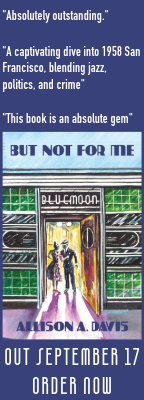by Stephanie Kane
Alphonse Bertillon’s photographs of corpses and Frances Glessner Lee’s crime scene dioramas depict gruesome deaths in domestic settings. Bertillon sought to document evidence; Lee to train investigators. But these forensic pioneers achieved more. By bringing murder up close and personal, they made us see violent crime in a new way.
Alphonse Bertillon was born in Paris in 1853 to a distinguished family of scientists. He was expelled from the Imperial Lycée for accidentally setting his desk on fire while brewing chocolate, and then decking the master who tried to extinguish the flames. The bank post secured by his father was predictably short-lived, and as a last resort Bertillon was shipped off to England. Conscripted into the French Army, he returned home.
When he was discharged, his father got him a job as a clerk at the Paris Prefecture of Police. There Bertillon was assigned the mind-numbing job of filling out booking cards. Determined to make the suspects’ descriptions more accurate, he began to isolate and measure facial features. He turned this into a process for standardizing mugshots, and “Bertillonage,” a centralized filing system which used body measurements to identify criminals. He is best remembered, however, for his crime scene photographs.
Bertillon calibrated his camera for uniform lighting, angle, and distance. To create a dramatic plunging view, he shot some victims from directly above with a tripod; for others he used a wide-angle lens. His goal was to preserve crime scenes as evidence, but by depicting victims in situ, surrounded by mundane objects of their daily lives, he captured something more potent: the intimacy of violent death.
In one photograph, an elderly dressmaker and former prostitute lies strangled on a cot in her shed. Her entrails hang from the wall; the table next to the cot has chipped crockery and bowls. Another photo depicts a laundress bludgeoned and slashed in her village home. Her body is wedged under the kitchen sink. On her ironing board sits a stack of neatly folded linens. Beside them are the hammer and knife.
Bertillon was aware of the emotional impact of his work. As Professor Lela Graybill writes in The Forensic Eye and the Public Mind: The Bertillon System of Crime Scene Photography. France’s justice system was under attack for its high rate of acquittals. The exactitude with which Bertillon calibrated his camera and his assertedly objective approach are belied by his occasional repositioning of bodies to create visual narratives that encouraged juries to convict.
If Bertillon’s genius was recognizing the courtroom as judicial theater and converting crime scenes into advocacy tools, Frances Glessner Lee’s was making crimes miniature stage sets.
 Lee was born in Chicago in 1878 to status and wealth. Her family’s fortune came from International Harvester farm equipment, and she wanted to study nursing or medicine. Instead of allowing her to attend college, her parents tutored her in domestic arts and forced her into an unhappy society marriage. Lee’s fascination with crime was spurred by a classmate of her brother’s at Harvard, George Burgess Magrath, who regaled her with tales of murder. Magrath, a medical examiner, inspired Lee to use her talents to train detectives to process crime scenes.
Lee was born in Chicago in 1878 to status and wealth. Her family’s fortune came from International Harvester farm equipment, and she wanted to study nursing or medicine. Instead of allowing her to attend college, her parents tutored her in domestic arts and forced her into an unhappy society marriage. Lee’s fascination with crime was spurred by a classmate of her brother’s at Harvard, George Burgess Magrath, who regaled her with tales of murder. Magrath, a medical examiner, inspired Lee to use her talents to train detectives to process crime scenes.
In the 1940s, Lee designed eighteen models depicting violent crimes, all but one of which were set in dwellings. With a carpenter’s help, she built her dioramas to an exacting one inch to one foot scale. Some furniture and trappings were ordered from a dollhouse company, but most were made from scratch with dental picks and jewelers tools. And Lee added tiny victims.
Lee’s dolls had bisque torsos and heads and wooden feet and legs. To accurately depict their faces in death, she visited crime scenes and the morgue. She knitted tiny stockings on straight pins, and to weather fabric for little trousers she reportedly kept wearing a blue suit long after it went out of style. But what’s most intriguing is the crimes themselves.
As fodder for her dioramas, Lee used the most enigmatic cases she could find. She formed composites from them and inserted conflicting clues. What does one make of a tidy little house where the parents are slain in their bedroom and blood is spattered on the wall behind their baby’s crib, but the murder weapon—a rifle—is on the kitchen floor and the doors are locked from inside? Not all of Lee’s dioramas were meant to be solved. She wanted cops to see how her victims lived, not just how they died.
Alphonse Bertillon’s and Frances Glessner Lee’s work endures beyond its historical value because of its emotional power. Depicting savagery in the intimacy of a home, amid the orderly minutia of a victim’s life, forces us to confront what we don’t want to see.
Murder isn’t science. Can any narrative explain a violent death?
Check out other mystery articles, reviews, book giveaways & mystery short stories in our mystery section. And join our mystery Facebook group to keep up with everything mystery we post, and have a chance at some extra giveaways. Be sure to check out our new mystery podcast too with mystery short stories, and first chapters read by local actors. A new episode just went up last week.
You can use this link to purchase the book on Amazon, or click here. You may not see the widget if you have ad blocker on:
Disclosure: This post contains links to an affiliate program, for which we receive a few cents if you make purchases. KRL also receives free copies of most of the books that it reviews, that are provided in exchange for an honest review of the book.

















0 Comments